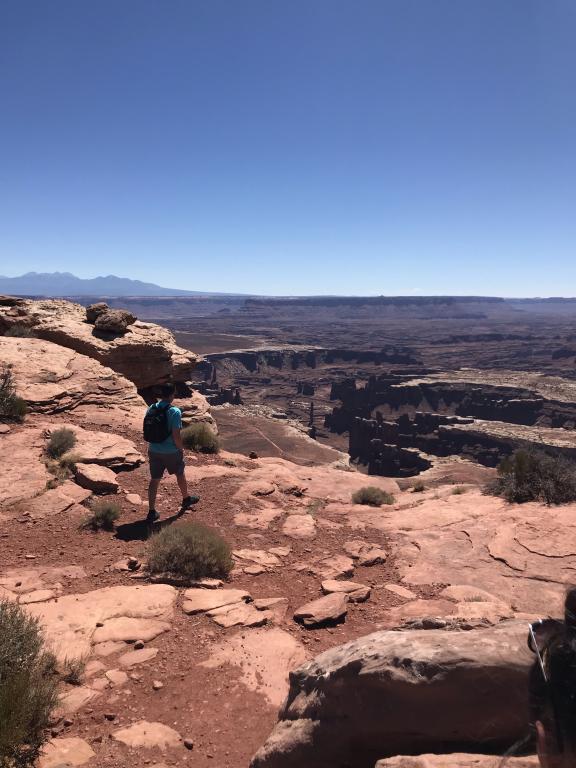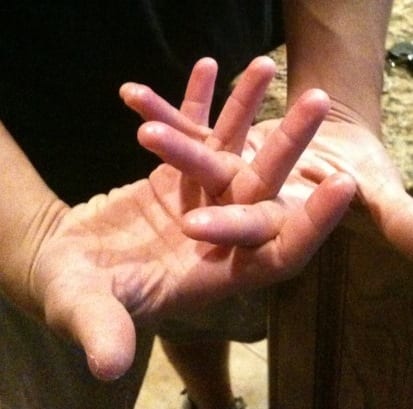
When I was living in Los Angeles for a short time in 1990, I worked in a Walden Books and I was given an advance copy of a book by Michael Chrichton. The book turned out to be one of the snappiest page-turners I’ve ever read–it also turned into a blockbuster movie franchise called, Jurassic Park. At this point, I can’t imagine there are many people who are unfamiliar with that story, but here is a nutshell synopsis. Scientists figured out a way to islolate the DNA of dinosaurs and, through cloning, successfully brought some of them back and opened a theme park on an island where people could go and see them. As the story goes, things went badly awry in Jurassic Park and all hell broke loose. Aside from the details of the story’s plot line, I was fascinated by the scientific possibilities postulated by Chrichton in his book. The idea that a species, long extinct, could be brought back using DNA and cloning made my mind race.
Little did the late Michael Chrichton know, back in 1990, just how prophetic his book might become.
We may be only a matter of a handful of years away from seeing a major animal from the past, not a dinosaur but an ice age mammal, the wooly mammoth, roaming the earth once more. Scientists are confident that they are getting quite close to making this a reality. The plan involves using DNA from well-preserved mammoth carcasses and crossing it with Asian elephants, the mammoths’ closest living relative, to create a hybrid version of the wooly mammoth.
As amazing as it would be to bring back a long extinct species, that isn’t the main reason for attempting this feat.
The main reason is saving the planet.
If successful, the plan would be to maintain a large herd of mammoths in the Siberian tundra on a large refuge, already set aside, called Pleistocene Park. Wooly mammoths once roamed this area of eastern Siberia by the thousands. With their extra layers of fat and thick hairy coverings, they were perfectly suited to the harsh climate of the frozen tundra. With these huge beasts gone, and with the warming climate of earth, the tundra has begun to change dramatically. That could end badly for humanity.
Say what you will about climate change–we can argue how much impact humans have on global temperature rise until we are blue in the face–but, in the end, does it really matter if the temperatures keep climbing? The melting of arctic ice contributing to sea level rise could be just the beginning.
What lies beneath places like Pleistocene Park in Siberia could spell complete disaster and wooly mammoths could hold the key to preventing it.
The earth below much of Siberia and northern Canada is supposed to remain in a state of permafrost. There is great danger if the permafrost thaws because a huge amount of trapped greenhouse gasses, such as methane, would be released into the atmosphere. If that happens, global temps could begin to climb much faster.
Enter the wooly mammoths to stomp in and save the day.
Mammoths–bunches of them–would serve to tromp down through the snow and help cold air permeate down to the earth’s surface keeping the permafrost frozen. Mammoths also would knock down a lot of trees that have grown in their absense, which would also help solidify the permafrost.
Now here is the ultimate irony in this amazing story. The relationship between human beings and wooly mammoths may have contributed to global warming thousands of years ago, which likely led to the complete extinction of the mammoth species. Ancient tribes of nomadic humans hunted the mammoths all over the Northern Hemisphere. In fact, wooly mammoths likely led some of the first humans into the Americas across the land bridge, called Beringia, during an age when sea levels were much lower. Over hunting likely greatly reduced the mammoth population, which could have changed the dynamic of the tundra, which, in turn, could have sped up global warming, leading to the total extinction of the mammoths and other large ice age mammals. Now, we stand on the brink of the possibility of humans being able to bring the mammoths back to try to reverse the process!
All of this sounds stranger than fiction, but it is not so far from becoming a reality.
Somewhere, Michael Chrichton must be smiling.












